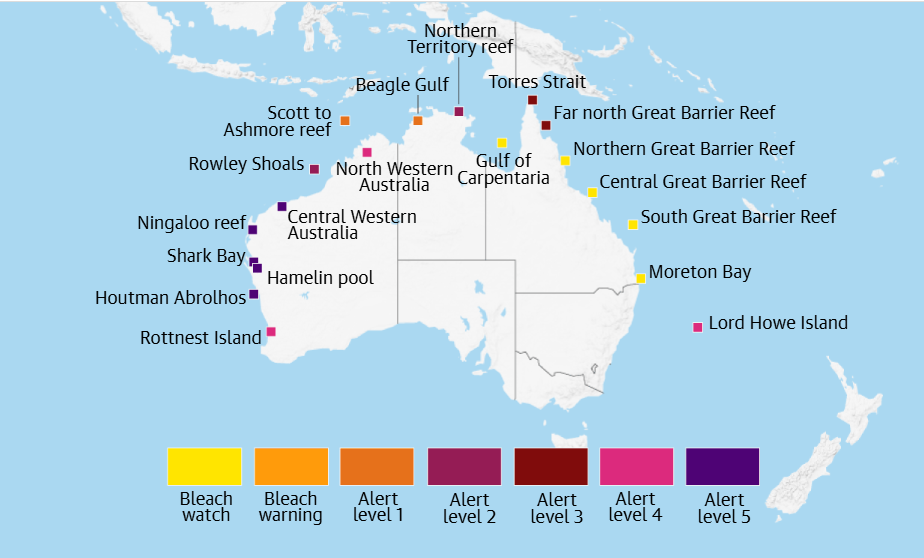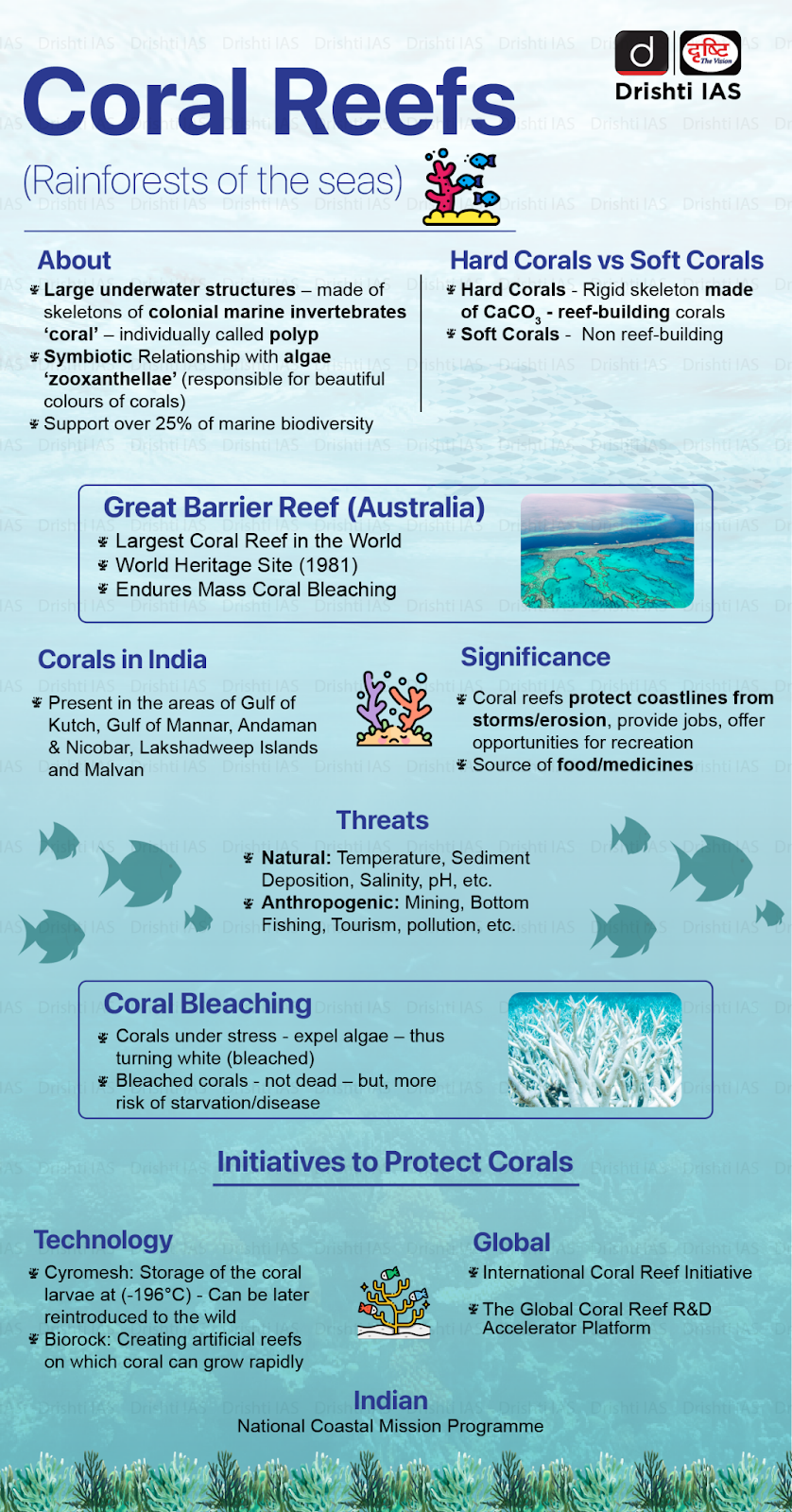Rapid Fire
Coral Bleaching in Australian Coral Reefs
- 02 Apr 2025
- 2 min read
Australia's Ningaloo Reef and Great Barrier Reef are experiencing its worst mass-coral bleaching due to prolonged marine heat waves due to climate change.
Coral Bleaching
- It is the loss of coral color (turning white) due to environmental stress, mainly rising sea temperatures, causing corals to expel symbiotic algae (zooxanthellae) that provide nutrients and color.
- Bleaching-level heat stress affected 83.6% of global reefs since 2023, with coral bleaching reported in 81 countries.
Great Barrier Reef:
- It is the world's largest coral reef system, spanning 2,300 km off Queensland, Australia.
- A UNESCO World Heritage site since 1981, it is home to endangered species like the dugong and green turtle.
Ningaloo Reef:
- Ningaloo Reef (a UNESCO World Heritage Site since 2011) is a 300-km fringing reef along Australia’s west coast.
- Fringing reefs are coral reefs that form along coastlines or islands, with little to no separation from the shore.
- Ningaloo Coast harbors rich biodiversity, deep-sea habitats, karst caves, and Cape Range landscapes.
- It hosts 300-500 whale sharks annually and unique endemic species like the Exmouth Spiny-tailed Gecko, Western Netted Dragon, and West Coast Banded Snake.
| Read More: Coral Bleaching in Great Barrier Reef |






